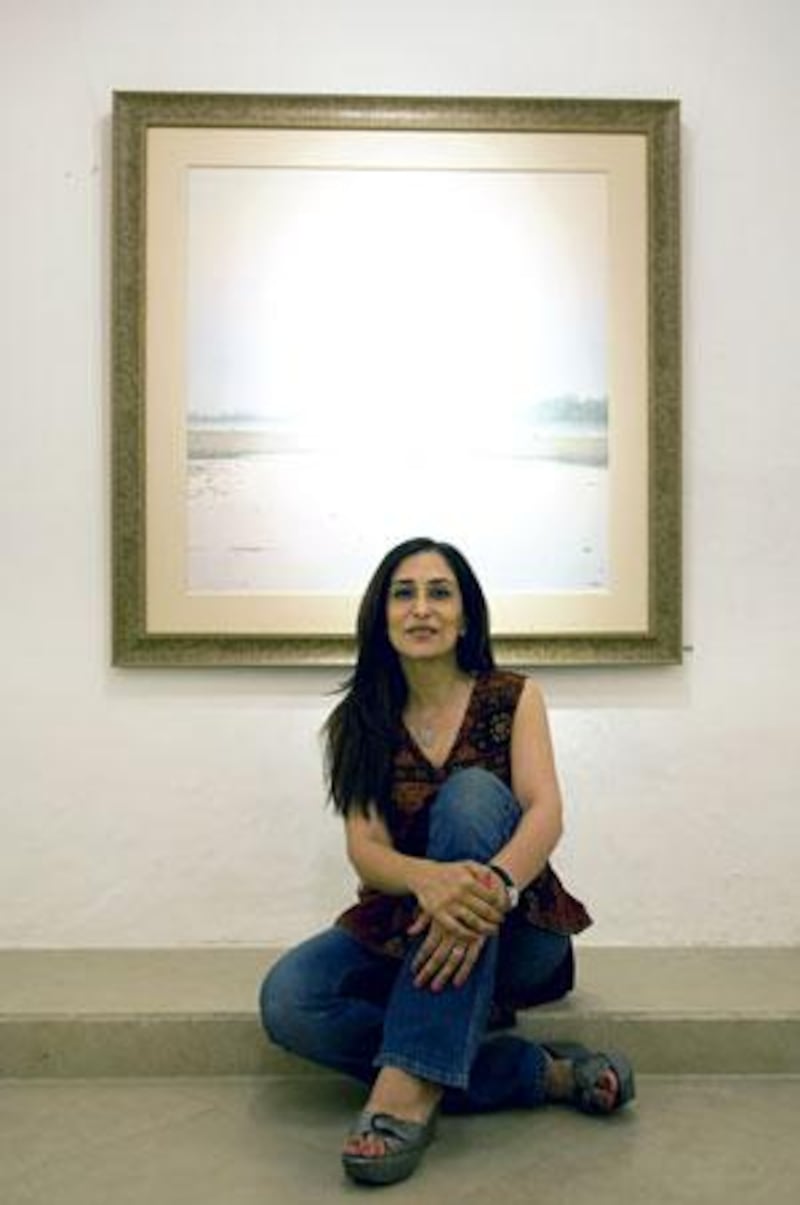ISLAMABAD // Less exposed than its Indian neighbour's output, contemporary art in Pakistan has evolved beyond its traditional domain of miniaturists and calligraphers to nurture a stable of modern figurative and landscape artists, now firmly established as investment commodities. "Contemporary art has really come up in a big way in Pakistan. I see it in the gallery. People really want to acquire art now," said Noshaba Qadir, curator of the Tanzara Gallery in Islamabad. "Even those with little art appreciation, or people who couldn't afford it before, now want a piece or two in their homes."
Values have trebled in the past five years, according to the director of the Artchowk.com website, Camilla Chaudhary. One of the emerging artists her website represents, Mansur Salim, has seen his prices triple in the last two years. "Five years ago the Pakistani art market was in its nascent stage. Great strides have been taken to bring international recognition both for artists and local galleries, and in developing a local collector base. This has resulted in almost across board increases in the value of art," Mrs Chaudhary said.
As an investment commodity it has soared "tremendously", she said. "One of the reasons is that Pakistani art remains much cheaper than Indian and Middle Eastern art. Pakistani artists and galleries started getting international recognition in the latter half of the boom in the international art market. As a result, the prices started from very low, saw organic growth and were not as inflated as some of the works from other Asian countries, particularly India. Thus they have not seen as large a correction under the economic downturn.
"If an investor does some research on the local art scene and buys a good emerging artist he can expect a 100 to 300 per cent profit, while for an established artist he can see a 50 to 75 per cent increase depending on the artist." Eighty per cent of the work that sold at ArtChowk's first exhibition in the Middle East a year and a half ago has doubled in value, she added. Tanzara Gallery's Mrs Qadir cites the works of the Islamabad-based landscape artist Ghulam Rasul, whose prices hit US$15,000 (Dh55,200) in his last exhibition at Tanzara, and Raja Changez Sultan, whose figuratives and Himalayan Odyssey series, exploring the play of light on mountains, have more than doubled since 2007.
These days a handful of Pakistani artists command major international recognition and global price-tags as high as $500,000, such as Rashid Rana. Mohammad Talpur's hypnotic arrangements of lines have captured international collectors' imaginations and command well over $10,000. Shazia Sikander, a graduate of Lahore's National College of the Arts, now based in the US, produces modern miniatures which are fetching huge prices in the US and have won the attention of the avid modern art collector Bill Gates.
"It's impossible to purchase a Talpur now. They're all sewn up," said Mrs Qadir. The artist Mr Sultan, who chaired Pakistan's National Council of the Arts for 4½ years, said Pakistani art only found its own identity last decade. "Pakistani art from the 1950s to 1980s had an imitative effect about it," Mr Sultan said. "Then there was an era of calligraphy. In the 1970s and 1980s everyone thought calligraphy was the thing, because in the Middle East there was big demand ? Over the past 15 years people seem to be getting away from miniatures and into three-dimensional and other kinds of perspectives. But with a colour and form and symbolism that is more individual. Patronage has been growing, especially from expatriate Pakistanis. From the mid-90s to the present you see really phenomenal increases."
The late Sadequain, revered muralist, painter and calligrapher, dazzled the world stage in the 1960s in Paris, winning the ultimate avant-garde accolade of being chosen to illustrate Albert Camus' work The Stranger, only to fade from global recognition on his return to Pakistan in the 1970s. He is hailed in the domestic market nevertheless. He gave away most of his works, and as those works are relinquished and creep into the market, some command close to $75,000, Mrs Chaudhary said.
The emerging artists Raza Mashkoor, who specialises in horses, and AS Rind, creator of metallic faces of long-necked ethnic women, have seen significant price hikes. "Just recently Mashkoor's work went to the auction houses - Sotheby's and Bonham's in Dubai - and it was only then he doubled the prices from last year," said Mrs Qadir. The calligraphy master Ahmed Khan, hailed as "the new Gulgee" after Pakistan's late doyen of calligraphers who was murdered in his Karachi home along with his wife in 2007, recently had a two-by-three foot piece fetch $20,000 at Bonham's.
The Pakistani diaspora in Dubai are major investor customers. One Dubai-based client turned up to the Tanzara Gallery with floor plans for his under-construction apartment and asked Mrs Qadir to select 22 paintings for its walls. Installations and video art are now entering the market. "These new art forms are pushing the boundaries of what was considered art and in doing so are approaching issues and questions with a new consciousness and narrative," Mrs Chaudhary said.
bcurran@thenational.ae






